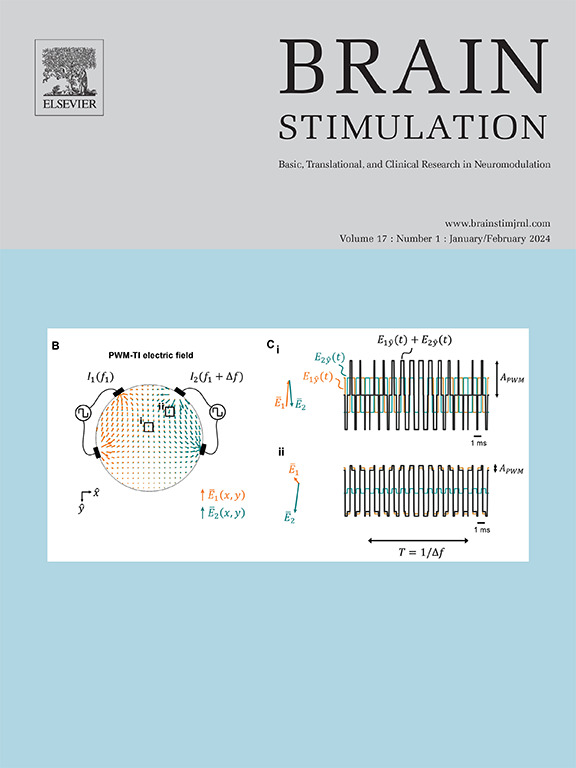Concurrent optogenetic motor mapping of multiple limbs in awake mice reveals cortical organization of coordinated movements
IF 7.6
1区 医学
Q1 CLINICAL NEUROLOGY
引用次数: 0
Abstract
Background
Motor mapping allows for determining the macroscopic organization of motor circuits and corresponding motor movement representations on the cortex. Techniques such as intracortical microstimulation (ICMS) are robust, but can be time consuming and invasive, making them non-ideal for cortex-wide mapping or longitudinal studies. In contrast, optogenetic motor mapping offers a rapid and minimally invasive technique, enabling mapping with high spatiotemporal resolution. However, motor mapping has seen limited use in tracking 3-dimensonal, multi-limb movements in awake animals. This gap has left open questions regarding the underlying organizational principles of motor control of coordinated, ethologically-relevant movements involving multiple limbs.
Objective
Our first objective was to develop Multi-limb Optogenetic Motor Mapping (MOMM) to concurrently map motor movement representations of multiple limbs with high fidelity in awake mice. Having established MOMM, our next objective was determine whether maps of coordinated and ethologically-relevant motor output were topographically organized on the cortex.
Methods
We combine optogenetic stimulation with a deep learning driven pose-estimation toolbox, DeepLabCut (DLC), and 3-dimensional triangulation to concurrently map motor movements of multiple limbs in awake mice.
Results
MOMM consistently revealed cortical topographies for all mapped features within and across mice. Many motor maps overlapped and were topographically similar. Several motor movement representations extended beyond cytoarchitecturally defined somatomotor cortex. Finer articulations of the forepaw resided within gross motor movement representations of the forelimb. Moreover, many cortical sites exhibited concurrent limb coactivation when photostimulated, prompting the identification of several cortical regions harboring coordinated and ethologically-relevant movements.
Conclusions
The cortex appears to be topographically organized by motor programs, which are responsible for coordinated, multi-limbed, and behavior-like movements.
清醒小鼠多肢同时光遗传运动图谱揭示了协调运动的皮层组织。
背景:绘制运动图谱可以确定运动回路的宏观组织以及皮层上相应的运动动作表征。皮层内微刺激(ICMS)等技术非常稳健,但耗时长且具有侵入性,因此不适合进行全皮层绘图或纵向研究。相比之下,光遗传学运动图谱则提供了一种快速、微创的技术,可进行高时空分辨率的图谱绘制。然而,运动图谱在追踪清醒动物的三维、多肢运动方面的应用还很有限。这一空白为涉及多肢的协调、伦理相关运动的运动控制的基本组织原理留下了悬而未决的问题:我们的第一个目标是开发多肢光遗传运动图谱(MOMM),以便在清醒小鼠体内同时绘制高保真的多肢运动图谱。在建立多肢光遗传运动图谱后,我们的下一个目标是确定协调的、与伦理相关的运动输出图谱是否在大脑皮层上具有地形组织:我们将光遗传刺激与深度学习驱动的姿势估计工具箱、DeepLabCut(DLC)和三维三角测量相结合,同时绘制清醒小鼠的多肢运动图谱:MOMM始终如一地揭示了小鼠体内和小鼠之间所有映射特征的皮层拓扑图。许多运动图谱相互重叠,且在地形上相似。一些运动表征超出了细胞结构定义的躯体运动皮层。前爪的精细衔接位于前肢的粗大运动运动表征中。此外,在光刺激下,许多大脑皮层部位同时表现出肢体共激活,这促使人们确定了几个蕴藏着协调和伦理相关运动的大脑皮层区域:结论:大脑皮层似乎由运动程序拓扑组织,这些程序负责协调、多肢和行为类运动。
本文章由计算机程序翻译,如有差异,请以英文原文为准。
求助全文
约1分钟内获得全文
求助全文
来源期刊

Brain Stimulation
医学-临床神经学
CiteScore
13.10
自引率
9.10%
发文量
256
审稿时长
72 days
期刊介绍:
Brain Stimulation publishes on the entire field of brain stimulation, including noninvasive and invasive techniques and technologies that alter brain function through the use of electrical, magnetic, radiowave, or focally targeted pharmacologic stimulation.
Brain Stimulation aims to be the premier journal for publication of original research in the field of neuromodulation. The journal includes: a) Original articles; b) Short Communications; c) Invited and original reviews; d) Technology and methodological perspectives (reviews of new devices, description of new methods, etc.); and e) Letters to the Editor. Special issues of the journal will be considered based on scientific merit.
 求助内容:
求助内容: 应助结果提醒方式:
应助结果提醒方式:


